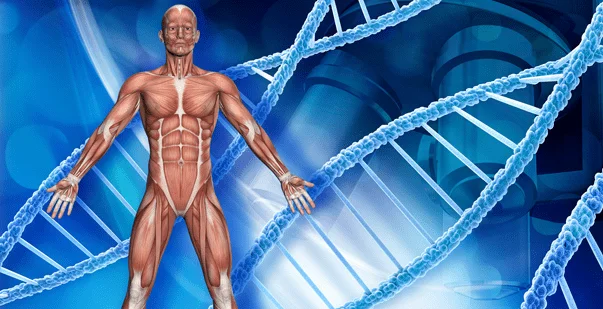In the study of human anatomy, muscles play a critical role. It facilitates movement and enables physiological functions. Do you know that in the human body, skeletal muscles make up 40% of body weight? Cardiac muscle cells, also known as Cardiomyocytes, are involuntary muscles that ensure heart’s rhythmic contractions and pumping.
In this blog on cardiac vs skeletal muscle, we will thoroughly explore the key points of muscle biology. After the detailed comparison, you will be able to understand the unique features and functions of these two types of muscle cells.
Master ACLS Now
Get ACLS certified with confidence
What is the Difference between Cardiac and Skeletal Muscle?
Cardiac muscles and skeletal muscles are two different types of muscle tissues. They have their own unique characteristics and function. Both of these muscles are responsible for movement and physiological actions. However, they do differ in structure, location and mode of action.
Let’s find out the difference between Cardiac and Skeletal Muscle-
| Cardiac Muscle | Skeletal Muscle |
| Found exclusively in the heart. | Attached to bones throughout the body, enabling voluntary movements. |
| Striated appearance with intercalated discs, allowing for coordinated contractions. | Also striated but lacks intercalated discs. Composed of long, multinucleated fibers. |
| Involuntary control; regulated by the autonomic nervous system. | Voluntary control; activated by signals from the somatic nervous system. |
| Responsible for pumping blood throughout the body, maintaining circulation. | Facilitates movement of the body, including walking, running, and other voluntary actions. |
| Exhibits rhythmic, continuous contractions to maintain heart function. | Contracts in response to nerve signals and relaxes when the signal ceases, allowing for precise control over movement. |
| Highly energy-demanding due to constant activity; relies on aerobic metabolism for sustained function. | Can switch between aerobic and anaerobic metabolism depending on the intensity and duration of activity. |
Read More: 10 Medical Emergencies that Demand ACLS Intervention.
What is the role of the Cardiac Muscle in the circulatory system?
Cardiac Muscle or Myocardium, is a type of muscle tissue found only in the heart. Its role in the circulatory system is critical as it directly ensures proper blood, oxygen and nutrients circulation. Here are the key roles of cardiac muscle in the circulatory system-
- Pumping Action: The primary function of cardiac muscle is to contract rhythmically and forcefully, generating the force needed to pump blood throughout the body.
- Maintaining Blood Pressure: By contracting and relaxing in a coordinated manner, cardiac muscle helps maintain blood pressure within the circulatory system, ensuring adequate perfusion to vital organs and tissues.
- Driving Circulation: Through its pumping action, cardiac muscle propels oxygen-rich blood from the lungs (left side of the heart) to the rest of the body and returns oxygen-depleted blood to the lungs for reoxygenation (right side of the heart).
- Regulating Cardiac Output: Cardiac muscle adjusts its contraction strength and rate in response to physiological demands, thereby regulating cardiac output to match the body’s metabolic needs.
- Facilitating Heart Valve Function: Cardiac muscle contractions aid in the opening and closing of heart valves, ensuring unidirectional blood flow through the heart chambers.
- Syncytial Contraction: Cardiac muscle cells are interconnected by specialized structures called intercalated discs, allowing for synchronous contractions that facilitate efficient pumping action and prevent blood leakage between cells.
- Electrical Conduction: Cardiac muscle cells possess inherent electrical excitability, allowing for the propagation of electrical impulses that coordinate and regulate the heart’s rhythmic contractions.
- Maintenance of Heart Rhythm: The coordinated contraction of cardiac muscle cells under the control of the cardiac conduction system ensures the maintenance of a regular heart rhythm, essential for effective pumping function.
Read More: Upskill and grow your career with ACLS certification.
How does Skeletal Muscles help in day to day movements?
Skeletal muscle is the most abundant type of muscle in the human body. They play a huge role facilitating day to day movements in the human body. Here’s how skeletal muscles help-
- Basic Mobility: Skeletal muscles enable basic mobility by allowing us to perform activities such as walking, standing, sitting, and changing positions effortlessly.
- Fine Motor Skills: These muscles facilitate fine motor skills, enabling intricate movements necessary for tasks like writing, typing, drawing, and manipulating objects with precision.
- Postural Support: Skeletal muscles provide essential support to maintain posture and stability, helping us stand upright against gravity and maintain balance while performing activities.
- Facial Expressions: Skeletal muscles in the face control facial expressions, allowing us to convey emotions, communicate nonverbally, and express ourselves socially.
- Respiration: Skeletal muscles involved in breathing, such as the diaphragm and intercostal muscles, contract and relax to expand and contract the thoracic cavity, facilitating inhalation and exhalation.
- Swallowing and Speech: Skeletal muscles in the throat and mouth contribute to swallowing food and fluids and forming sounds for speech production.
- Gross Motor Movements: Skeletal muscles power gross motor movements, including lifting, carrying, pushing, and pulling objects of various sizes and weights.
- Joint Flexibility and Range of Motion: By contracting and relaxing, skeletal muscles facilitate joint flexibility and a wide range of motion, allowing us to bend, twist, rotate, and extend our limbs and joints freely.
- Physical Exercise: Engaging in physical activities such as sports, exercise, and recreational pursuits relies heavily on the coordinated action of skeletal muscles to perform dynamic movements and generate force.
Conclusion
When exploring the topic of cardiac vs skeletal muscle, several fascinating insights on their diverse roles come to light. Both cardiac and skeletal muscles showcase the remarkable complexity and precision of the human anatomy. Their coordinated efforts contribute to overall health, mobility, and functionality. Hence, understanding the unique properties ensure that we appreciate the intricate mechanisms that sustain life and movement.
Resources
https://www.ncbi.nlm.nih.gov/books/NBK535355/
https://en.wikipedia.org/wiki/Cardiac_muscle
https://www.medicalnewstoday.com/articles/325530
https://www.sciencedirect.com/topics/medicine-and-dentistry/skeletal-muscle-cell
https://my.clevelandclinic.org/health/body/21787-skeletal-muscle







